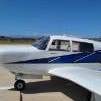Engine or mag problem - Need suggestions
-
Members Online
- AdamJD
- katzhome
- JimK
- Larry Houghton
- varlajo
- CL605
- amillet
- prillayo03
- Guy123
- 201Steve
- donkaye
- TCC
- kaba
- PT20J
- Deb
- Ragsf15e
- exM20K
- pkellercfii
- Tmack201
- jlunseth
- Gone
- 4cornerflyer
- ohdub
- M20F
- Joshua Blackh4t
- phxcobraz
- EricJ
- jamesyql
- raymondscott0321
- bigmo
- jeff.reynoljm
- Al Matt
- Utah20Gflyer
- Peter T
- glbtrottr
- eman1200
- Andy95W


Recommended Posts
Join the conversation
You can post now and register later. If you have an account, sign in now to post with your account.